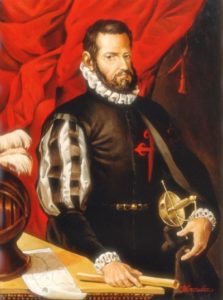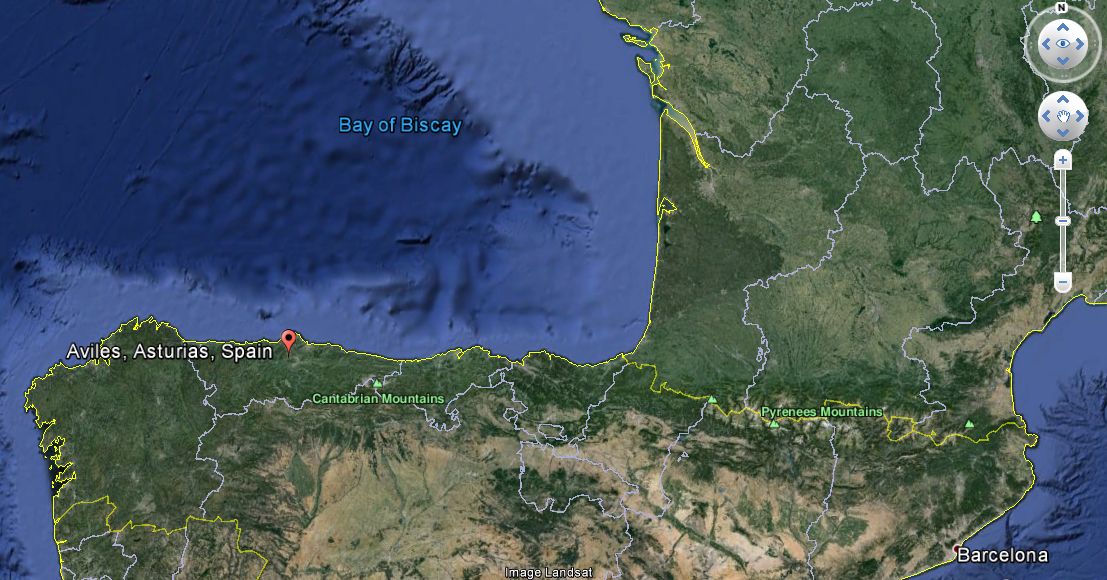 As we approach 2015, the 450th anniversary of the founding of our city, many members of the public are becoming interested in knowing more about the people and events that culminated in the founding of St. Augustine, the nation’s oldest port. Below is the first in a series of posts that will share some of our fascinating history for all to enjoy.
As we approach 2015, the 450th anniversary of the founding of our city, many members of the public are becoming interested in knowing more about the people and events that culminated in the founding of St. Augustine, the nation’s oldest port. Below is the first in a series of posts that will share some of our fascinating history for all to enjoy.
………
In the year 1519 Juan Ponce de León’s eldest daughter Juana was married to Garcia Troche on the island of Puerto Rico. Ponce was taking care of all of his political and familial obligations so that he could finally return to Florida and establish a permanent settlement that would effectively bring the new territory into the Spanish realm. It was not to be. Ponce de León’s failed attempt would cost him his life and the task of successfully founding a settlement in Florida would fall to another born that same year. On the other side of the Atlantic Ocean in the northern port city of Avilés a child was born into a family of minor nobility. The child, a boy, was christened with the name Pedro Menéndez. Like the name of Juan Ponce de León, that of Pedro Menéndez would forever be associated with Florida.

Map of the north coast of Spain showing the location of the city of Avilés, the birthplace of Pedro Menéndez de Avilés.
In 1521, the year Ponce de León made his attempt to settle Florida, France and Spain went to war. This war set the tone of Franco-Spanish relations for decades to come and served as the backdrop to Pedro Menéndez’s child hood and coming of age. The war began in the north and clashes occurred on the Bay of Biscay and in the Pyrenees Mountains which separate Spain and France. One of the consequences of this war was the onslaught of French privateers, known as corsarios, which for the first time began a serious assault on the wealthy Spanish shipping from the Indies. This began in 1523 with the capture of three Spanish ships carrying Mexican Aztec treasure from Hernán Cortéz to the court of Charles V.
These very rich prizes gave the French a taste for Spanish gold and corsairs appeared in great numbers off the coasts of the Azores, the Canaries, and San Lúcar de la Barrameda, the entrance to the Guadalquivir River and the port of Seville. In response to this, in 1526 the Spanish prohibited the sailing of individual vessels to and from the Indies and organized them into an annual convoy system that would remain a Spanish practice for centuries. This resulted in a decrease of Spanish losses and also led to the capture of numerous French corsairs by the Spanish defenders of the fleet known as “la guarda de flotas”. With this change in tactics, French corsairs expanded their horizons to the Indies themselves where they assaulted vessels engaged in the inter-island trade and sacked Spanish coastal settlements.
When Pedro Menéndez was ten years old in 1529, the Spanish Emperor Charles V gave permission to a number of northern ports to engage in trade with the Indies. Among these was Avilés in Asturias. These northerners, or norteños, had a long established reputation for maritime excellence in both the shipbuilding trade and in warfare. The iron and timber resources of northern Spain and its coast line on the Bay of Biscay made shipbuilding a natural industry. Warfare between Spain and its neighbors and the consequent maritime losses contributed to the shipbuilding industry by providing a continuing need for new shipping.
In times of war the Spanish crown gave letters-of-marque to captains who would outfit and arm ships at their own cost, often in share holding companies, to make war on the enemies of Spain and which operated independently of la guarda de flotas. Spanish privateers who went after French corsarios were called contra corsarios, and when it came to warfare the norteños had a fearsome reputation as privateers on the Bay of Biscay and elsewhere. Norteños are very well represented among mariners who undertook to protect Spain’s trade. These included such men as Juanot de Villaviciosa, Domingo de Villaviciosa, Bartolomé Carreño, and Álvaro Sánchez de Avilés, the elder brother of Pedro Menéndez from whom Menéndez would learn much about seamanship and fighting. This was the world in which Pedro Menéndez de Avilés grew and came of age and which shaped his historical trajectory.
Dr. Sam Turner is the Director of Archaeology at the St. Augustine Lighthouse & Museum. He has been part of the Lighthouse Archaeological Maritime Program (LAMP) since 2006.
This article was previously published in The St. Augustine Record.

